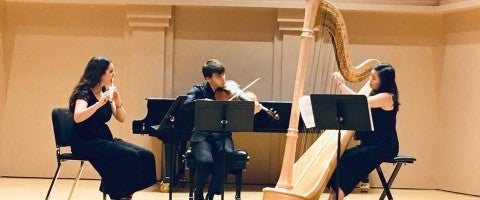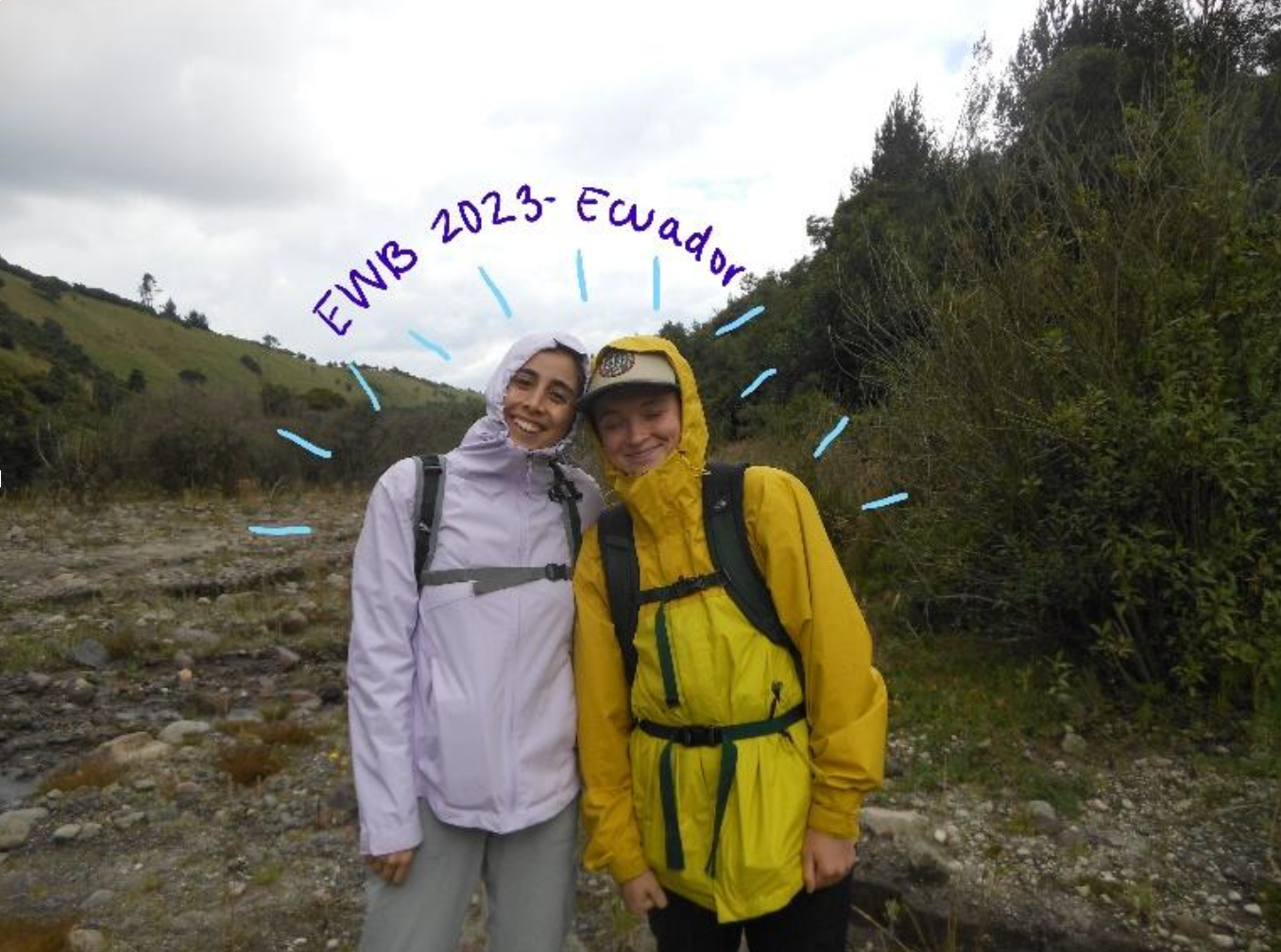¡Hola desde Ecuador!
Our names are Eliana Cadena and Sarah Glass, and we are both first year graduate students in the environmental engineering department. We are so grateful to have had the opportunity to travel with Engineers Without Borders to help a community in Tandacato, Ecuador. An EWB chapter out of CalTech invited us to join their trip as graduate students. We want to summarize our week in Ecuador to share some of the cool and important things we were able to accomplish, we hope you enjoy!
We took off for Ecuador Wednesday evening, on a night flight that allowed us to see the beautiful lights of the mountain cities on our way into the airport. Eliana is an Ecuadorian native, so we were so happy to get to stay with her family before our trip really began. Eliana is bilingual and was one of the translators on the trip, knowing a second language is extremely beneficial in helping foreign communities and we were so glad she was able to communicate the needs of both the community and the travel team.
Our first full day in Ecuador we explored Quito, the capital of Ecuador, which is a UNESCO World Heritage Site, with many churches and homes that are hundreds of years old. We visited the Basilica, a roman catholic church, that has amazing ornate details. We then walked around and visited other churches, plazas, shops, and restaurants. We were also able to enjoy some traditional Ecuadorian food, so good!
On Friday we met with the rest of our team for the week at the EWB national office in Quito, Ecuador. Here we introduced ourselves to each other, learned about the background of the community we would be working in (Tandacato), and outlined the plan for the week. We traveled to the Tandacato community for an evaluation of their water system- the first step in an EWB intervention. Tandacato has a population of around 2100 people and has a water system of almost 30 years of operation.
- Problem: The water system is not ensuring enough and continuous safe drinking water to the community due to affections in catchments because of landslides, design of storage tanks and pipe distribution.
We had to visit all pieces of their water system as well and get a quality assessment of the community’s abilities and preferences on changes to their water system. After the meeting we all loaded into a bus and headed south to the Cotopaxi region (yes, like the famous volcano!).
Once we arrived at our hotel for the week, we quickly settled in. It was especially easy because the hotel was located at the base of the Cotopaxi volcano and had a view unlike anything you could ever see in Houston. We then visited our community for the first time. There was a building dedicated to the community’s water board, and this was our meeting space for the week. Here we met many community members and were a part of a meeting that laid out our plans for the entire community. We introduced ourselves and answered the community members’ questions. We all felt so welcomed by the community and it was a sign of a great and productive week to come.
In the evenings we had free time; we would catch up on work and plan for the coming days as well as spend time with our team laughing and talking about our hometowns. The first night was exciting because we knew we had so much to do the next day!
On our first of four workdays we hiked many miles of mountainous terrain to visit the sources of the community’s water. These hikes were tough because of the elevation of Tandacato (>10,000 ft) but the views were stunning. Everything in the mountains was green because it is the rainy season, and there are llamas and cows on the mountain sides. When looking out from a clearing, all you can see is more mountains and clouds.
While we visited these sites, we worked alongside students and faculty from Universidad San Francisco de Quito to analyze water quality samples in-situ and in the lab. Some parameters tested include: temperature, pH, levels of metals, coliforms, turbidity, conductivity etc. We also used gps, drones and other measuring techniques to make an updated map of the entire system that we could overlay the water system on. This would be an extremely helpful tool in the future for us and the community. The following workdays were similar with various focuses, other sources, storage tanks, delivery of water to individual houses, and chlorination of the water.
It took the entire team to complete all this work in just a couple of short days, but we worked rain or shine and got it all done! There was also lots of community interaction because of the survey we were taking of the community. We were able to visit many community members’ houses to test their water and interview them about their experience with the current water system. Eliana acted as a translator and was able to get community members excited about the project. Often, the community members would invite us to meet their family and sometimes pets, and we began to really feel accepted and welcomed by the community.
We learned people’s stories and fully understood the importance of this project. As the week came to a close, we prepared a way to summarize all of our findings for a meeting with the community. On the last day, the community members cooked us lunch with foods they harvested from their own fields, and we all sat at the table together and enjoyed lunch. During the final meeting Eliana translated our findings to be communicated with the community and their gratitude and excitement for the project was clear. We are so grateful for the opportunity to take part in this experience. Thank you to CalTech for including us, the community and USFQ for supporting us during the week, the EWB office in Ecuador for their leadership, and to the Expanding Horizons scholarship for making this experience possible. We cannot wait to continue working with EWB to build this water system for the Tandacato community.


